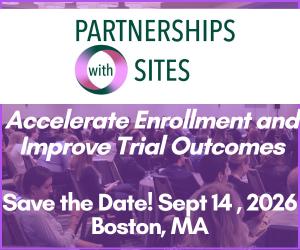Where Pharma Can Improve Patient Experience, with MRCT Center
Sylvia Baedorf Kassis, MPH, Program Director at the Multi-Regional Clinical Trials Center of Brigham and Women’s Hospital and Harvard (MRCT Center), discusses the work the center is leading in accessibility, disaster response, and health literacy, to help sponsors create a better experience for participants in clinical trials.

Your work is centered on improving the patient experience. What specific areas are you focusing on?
As a center, patient accessibility, sponsor responsiveness, and health literacy are areas we have been focusing on. Science needs to be accessible to everyone in order for the benefits to be realized at a population level. That can be very challenging to do at scale, but making change is important. In order to make improvements, we need to understand the challenges.
What should pharma sponsors know about accessibility and inclusion?
The MRCT Center’s definition of inclusion includes “race and ethnicity,” but intentionally expands to cover LGBTQIA+ populations, populations with disabilities, age at either end of the age spectrum, and language and cultural diversity. And we have many resources to support these efforts, like toolkits to support LGBTQIA+ and pediatric inclusion.
The ultimate goal is to help sponsors and investigators improve representation in clinical trials to ensure that trials reflect the people and communities affected by the condition or disease, and that we are not unfairly burdening or excluding populations.
"The ultimate goal is to help sponsors and investigators improve representation in clinical trials to ensure that trials reflect the people and communities affected by the condition or disease, and that we are not unfairly burdening or excluding populations."
Can you share how that research translates into actionable help for sponsors?
We have useful guidance and tools available that focus on how to implement accessibility and inclusion into clinical trials.
We released the Accessibility by Design Toolkit focused on the inclusion of individuals with physical, visual, hearing, sensory, cognitive and intellectual disabilities, to name just a few. And there are many trials with decentralized elements, with patients participating in trials at home or sites away from the traditional clinical trial site. The more work we do directly with participants, the more we realize that participant-focused materials, such as instructions for research procedures, are created in a way that is available to everyone. If you’re visually impaired, or if you have a disability that makes certain actions difficult, can you read and implement those instructions?
What is an area of focus for where the industry is headed?
One is providing industry direction around overall responsiveness as a sponsor or investigator. We’ve seen that there will be interruptions to clinical trials due to factors like environmental crises, pandemics, and violent conflicts. Industry sponsors need to be adaptive and responsive to those emergencies. We have a project to help build safeguards for inevitable major interruptions.
"We want to learn from organizations that have weathered emergencies well and share those lessons broadly."
Why that topic?
We are hearing from the research community that we must learn from the pandemic and be better prepared for the next time; we all know that there will be a next time. We want to learn from organizations that have weathered emergencies well and share those lessons broadly.
Sponsors and investigators want to do right by their participants who are volunteering their time and their data to research. We must maximize the results and utility of that participation, and ensure that unpredictable interruptions continue to permit participant’s efforts to reach their full potential.
What have you created to help pharma with health literacy?
Over the past several years, we have been co-developing a Clinical Research Glossary with patients and advocates, developed through a robust multi-party review process and adopted as a global standard by CDISC. In addition to having the definition of these fundamental research terms, there is also an entire section focused on where patients might see those words and what questions to ask if they do. We have included patient and caregiver advocates in developing this glossary because only they can tell us what is – and what is not – understandable. When participants understand the study, they are more likely to be able to stay in the study.
One benefit is that pharmaceutical sponsors and investigators don’t have to create their own glossary or reinvent the wheel. Larger companies can integrate it into their current health literacy work; smaller companies can use it instead of trying to create their own. We have put significant effort into making this a user-friendly resource that patients can use themselves, while also providing a robust tool to aid in communications. It’s a win-win.
In This Article







